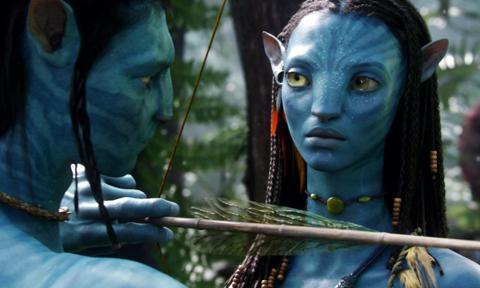
James Cameron’s Oscar-winningAvatar was a sensation when it debuted in 2009, and ended up earning over $2 billion during its theatrical run. The film is set over 100 years in the future where humans have begun to colonise a moon named Pandora in order to mine its valuable minerals. Jake, who is paraplegic, replaces his twin and is sent on the Na’vi inhabited Pandora for a corporate mission. After the natives accept him as one of their own, he must decide where his loyalties lie.
While the film’s story of humans invading another planet for its resources wasn’t anything new, its visual effects and motion capture techniques were groundbreaking at the time. The way the filmmakers created photorealistic characters and a complete ecosystem for the setting of Pandora was beyond impressive, earning the franchise lifelong fans.
It’s been over a decade since the film’s premiere, and the long-promised sequel, Avatar: The Way of Water, is finally set to be released on December 16. Not only this, the untitled Avatar 3 is also planning to hit theatres on December 20, 2024. Though plot details are still tightly under wraps, Cameron has plans to produce two additional films for the franchise, though he might not direct any past the third or fourth instalments.
Now that Avatar: The Way of Water is only a few weeks away from release, and you’ve finished watching its trailer on loop, it’s the perfect time to look back at some other films reminiscent of Cameron’s biggest alien blockbuster.
Whether they remind you of Avatar’s stunning 3D visuals, immersive universe-building, sci-fi elements, or story narration, here are five movies to watch if you want to relive the feeling of exploring a fantasy world like Pandora.
Independence Day (1996)
Plot-wise, Independence Day is an intriguing inverse of Avatar in that it sees aliens visiting Earth instead of humans travelling to space. It’s often considered one of the most visually stunning blockbusters of all time, and is also credited for the resurgence of disaster films in the 1990s. The film is remembered for its Oscar-winning visual effects and destruction sequences, but even more for the way it achieved them.
In this epic adventure, when strange phenomena surface around the globe, the skies ignite serving as harbingers of havoc. Terror races through the world’s major cities, and extraordinary events unfold signalling the arrival of a strong evil force. Its mission: total annihilation over the Fourth of July weekend. The last hope to stop the destruction is an unlikely group of people united by fate and unimaginable circumstances.
The Alien Movie Saga (1979-2017)
Based on a story by O’Bannon and Ronald Shusett, the famed Alien movies follow the crew of the commercial space tug Nostromo, who, after coming across a mysterious derelict spaceship on an undiscovered moon, find themselves up against an aggressive and deadly extraterrestrial being set loose on the Nostromo.
Prometheus (2012)
Like Avatar, the Alien franchise prequel, Prometheus, takes place in the future on a faraway moon as explorers from Earth embark on a journey to investigate it for their own gain (in Avatar, they’re seeking a valuable mineral; in Prometheus, they want answers to humanity’s origins).
The story follows a team of explorers who travel to the darkest parts of the universe in search of a clue to mankind’s origins. Two brilliant young scientists, Shaw (Noomi Rapace) and Holloway (Logan Marshall-Green) lead the expedition. While Shaw hopes to meet a race of benevolent, godlike beings who will in some way validate her religious beliefs, Holloway goes with an aim to debunk any spiritual notions. However, neither the scientists nor their shipmates are ready for the unthinkable terrors that await them.
Dune (2021)
While Avatar’s colour palette is bright and colourful, Dune’s is more muted and grey (though the visuals are no less stunning). The best example of this is in its depiction of the fictional planet Arrakis, which is rife with futuristic landscapes of seemingly endless sand, rocky outcroppings, and unpredictable weather.
Paul Atreides (Timothée Chalamet) is a brilliant and gifted young man destined to travel to the most dangerous planet in the universe to safeguard the future of his family and his people. As malevolent forces fight over the planet’s exclusive supply of the most precious resource in existence, only those who can conquer their own fear will survive. Bringing the phenomenal visuals back to life, Dune: Part Two is all set to hit theatres next year.
Interstellar (2014)
The visuals in Christopher Nolan’s time travel film are remarkable because they’re a mix of CGI, practical sets, and real-world locations. From wormholes to distant planets with varied ecosystems, the different settings give the film an otherworldly feel.
In the movie, as planet Earth is being rendered inhabitable by a global crop blight, Professor Brand (Michael Caine), a brilliant NASA physicist, works on plans to save mankind. He aims to execute this by transporting Earth’s population to a new home via a wormhole. But first, Brand must send former NASA pilot Cooper (Matthew McConaughey) and a team of researchers through the wormhole and across the galaxy to find out which of three planets could be mankind’s new home.
Just like Jake (Sam Worthington) and Neytiri (Zoe Saldana) in Avatar, Interstellar features characters who are striving to build a better world for their descendants, in a brand new and visually impressive environment.






